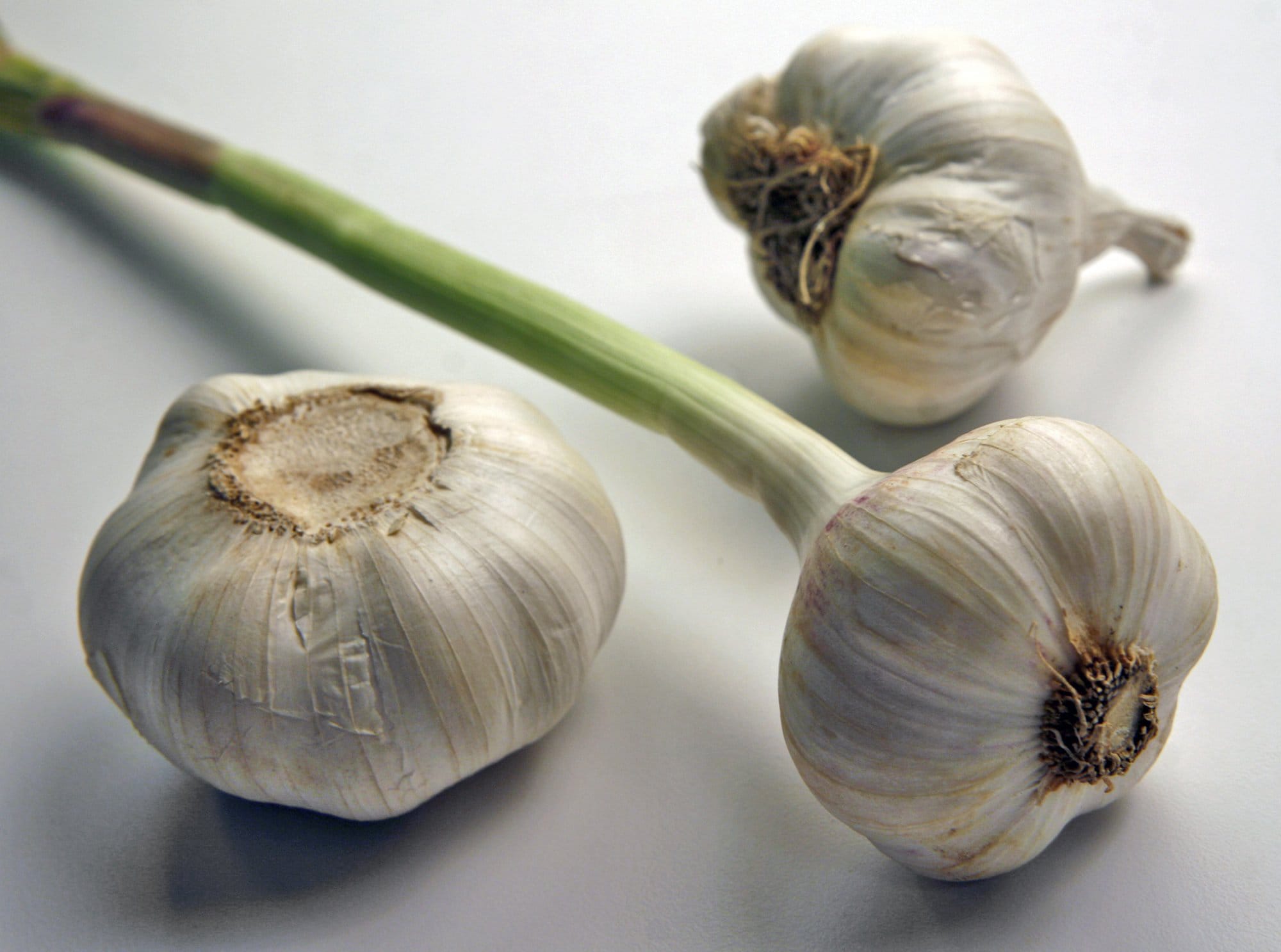Garlic, what is it? Used in cooking, it must be an herb, right? Closely related to onions, shallots, leeks and chives — all members of the lily family — it is usually classified as a vegetable. Whatever it may be called, it’s a culinary must in your kitchen!
Native to central Asia, garlic was brought to the U.S. in colonial times, where the cloves were used as a medicinal herb against disease; it has a natural antibiotic property that was used all the way through World War II for treating infections. Immigrants from Europe in the 20th century introduced eating garlic in food, and by 1940, garlic was embraced not only as a seasoning but as a major ingredient in recipes.
A normal head of garlic has 10 cloves, with each clove having only 4 calories.
There are two types of garlic, soft-neck and hard-neck. Soft-neck garlic has a soft stem, and is often braided. This variety has a strong, intense flavor. Hard-neck garlic grows one ring around the stem and has a milder taste. Young, immature garlic is sometimes sold as green garlic. Its round bulb imparts a mild garlic flavor but is not spicy. Scapes are the immature flower stalks of hard-neck garlic and used in stir-fries.
Garlic is used in virtually every cuisine in the world and in so many ways. Saut?ed, baked, roasted, braised, added to soups and sauces, marinades, spice rubs and stir-fry. You have control over the flavoring by how much you add. Applied to different kinds of bread with oil or butter, you have garlic bread or toast, while mixing it with egg yolks and olive oil makes aioli. Cut the top of a garlic head off, put on aluminum foil, drizzle with olive oil and wrap in foil. Bake in a dish for 45 minutes in a 400 F oven. When the garlic is caramelized, squeeze the garlic out and you have the perfect spread.



